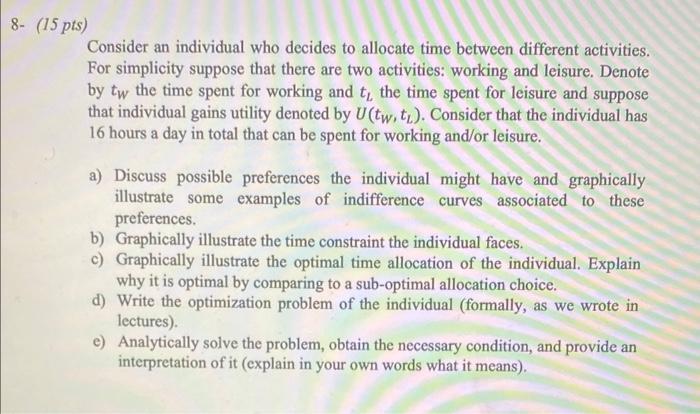Answered step by step
Verified Expert Solution
Question
1 Approved Answer
8- (15 pts) Consider an individual who decides to allocate time between different activities. For simplicity suppose that there are two activities: working and

8- (15 pts) Consider an individual who decides to allocate time between different activities. For simplicity suppose that there are two activities: working and leisure. Denote by tw the time spent for working and t, the time spent for leisure and suppose that individual gains utility denoted by U(tw, t). Consider that the individual has 16 hours a day in total that can be spent for working and/or leisure. a) Discuss possible preferences the individual might have and graphically illustrate some examples of indifference curves associated to these preferences. b) Graphically illustrate the time constraint the individual faces. c) Graphically illustrate the optimal time allocation of the individual. Explain why it is optimal by comparing to a sub-optimal allocation choice. d) Write the optimization problem of the individual (formally, as we wrote in lectures). e) Analytically solve the problem, obtain the necessary condition, and provide an interpretation of it (explain in your own words what it means).
Step by Step Solution
There are 3 Steps involved in it
Step: 1

Get Instant Access to Expert-Tailored Solutions
See step-by-step solutions with expert insights and AI powered tools for academic success
Step: 2

Step: 3

Ace Your Homework with AI
Get the answers you need in no time with our AI-driven, step-by-step assistance
Get Started


